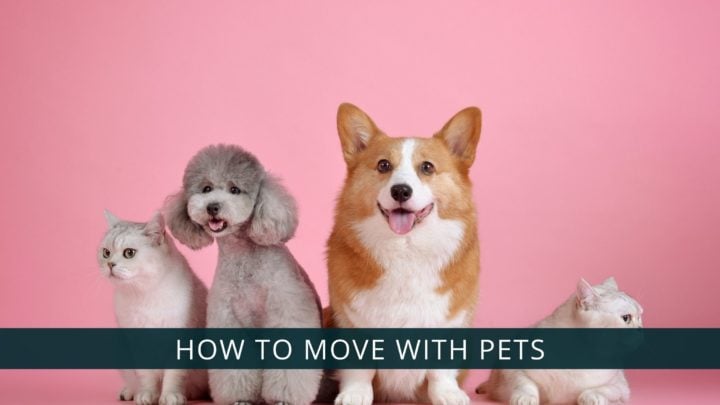Eckert’s Moving and Storage understands how stressful moving can be for families and individuals. However, it can make your pets extremely anxious. When they’re taken to a new, unfamiliar environment or when there’s a lot of unexpected activity going on around them, it can be very stressful and discomforting. These challenges can be difficult and there’s no one size-fits-all formula or solution to make it easier for them. However, the following tips can help with calming them during your relocation:
- Discuss your move with your vet – inform your vet about your upcoming move so you can get their medical records and medications to take with you. Ask your vet if they have any recommendations for a veterinarian in your new community. Usually, they will help you connect with the new vet as they have access to a wide network of professionals.
- Don’t let them out until you’ve arrived at your new home – it’s too easy for them to get lost in unfamiliar surroundings. When you get to your new home, give them a few days to adjust to their new surroundings. Cat owners should keep them indoors for safety reasons and use this transition period to let them get used to being indoor cats from now on.
- Keep them away from all the action – the best way to reduce stress on pets is to keep them away from all the activity and secure them in the quietest area possible. If you’d rather not leave them with friends or put them in a kennel, you could put them in a bedroom that’s already been emptied. Be sure to check on them regularly.
- Make an overnight kit for your cat or dog – this should be readily accessible and have all the important items such as grooming tools, food, litter, and toys to keep them comfortable and sustain them during those first days in your new home.
- Move your home before you move your pet – try to have everything set up for them in your new home, even if it’s only one room. connectify 2017 crack This will give them a chance to adjust to their new surroundings before introducing them to the rest of the house.
- Transport them in your vehicle – you can put cats and smaller dog breeds in a pet carrier that can be secured with a seat belt in the back seat of your own vehicle. It may keep them more comfortable if you cover their carrier or kennel with a blanket so they’re unable to see the scenery changing while driving
- Update their personal information – once you’ve moved, be sure to update their microchip information and their tags to reflect your new address and phone number.
- Moving with birds: Though your bird might not leave your shoulder all day, but moving day and changes can be stressful. To ensure they don’t fly away, make sure you put them in a cage a day or two, before you move. Additionally, it will help to acclimatize them faster to the changes.
- Acclimating with the crate: Irrespective of whether you are flying or driving with your pets, preparing them to stay in crates can be a task especially, as none of them are used to it. This, start planning early on as it might take weeks for them to be acclimatized to staying within the crate. Prepare your pets to start having meal within the open crates and then with the door shut. Give them treats and playtime after the crate time has ended. This will help them build positive association with the crate.
In addition to the above, it’s important that you consider the well-being of your cat or dog when choosing your new apartment or home as well as the neighborhood you move into. Thus, before you choose your dream home, be sure your pet loves it just as much. Take a walk around the neighborhood with your pet to ensure that it’s safe enough for them. Watch for any neighborhood dogs that are left unattended or seem to be aggressive.
Furthermore, cats and dogs are different when it comes to their square footage needs. Consider the following:
- For cats – be sure your new home has plenty of room for vertical spaces and shelving. You know how well your cat loves getting on top of furniture don’t you?
- For dogs – consider the needs of your dog on an individual basis. Dogs with house training issues, older dogs, and puppies will need to go outside on potty breaks often. This could be difficult in an apartment with a lot of stairs or a home that doesn’t have a yard for them to enjoy.
For more information about moving with pets, call Eckert’s Moving and Storage at (888) 274-7230 and speak with one of our representatives today.

